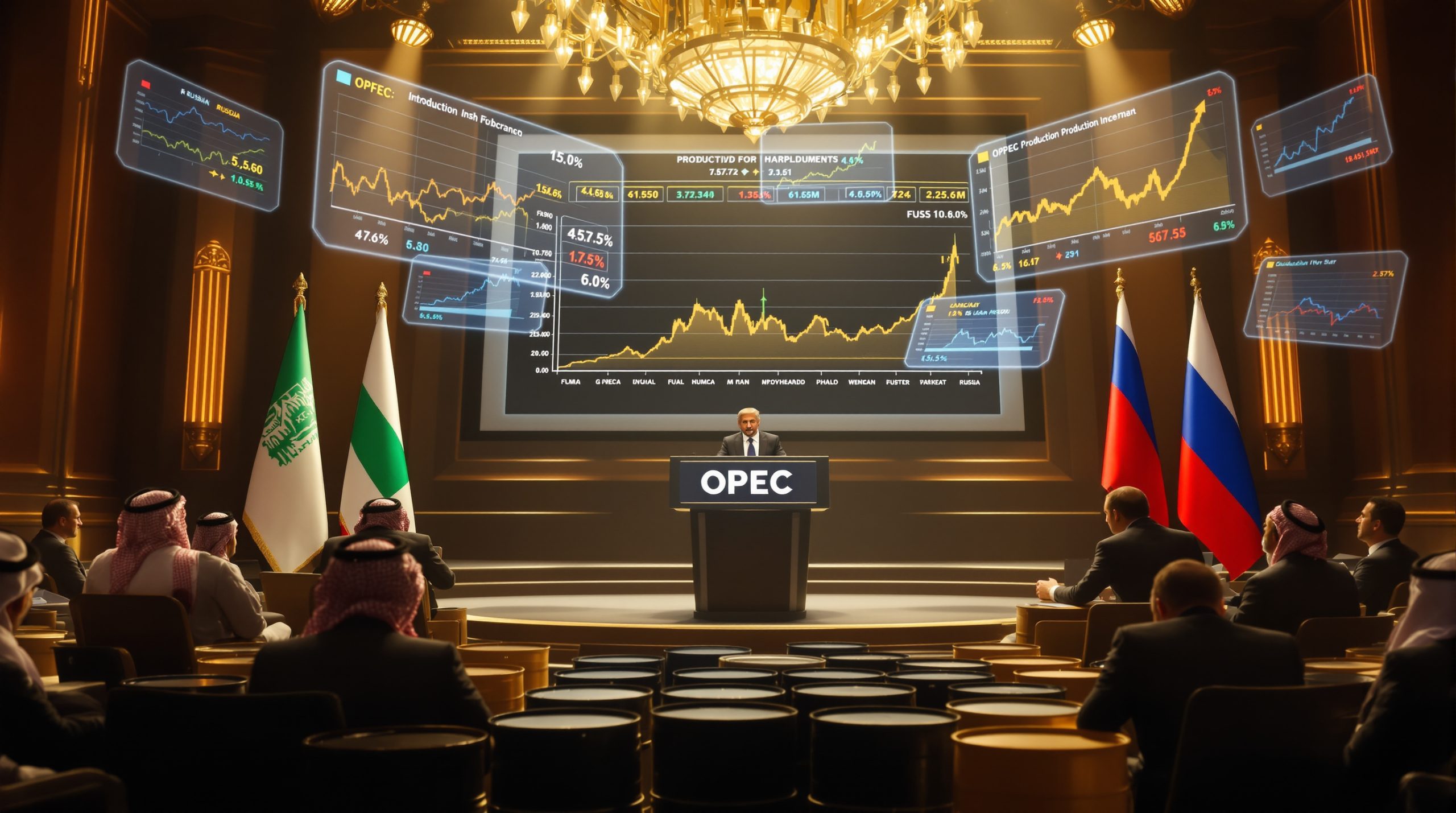Understanding the Strategic Importance of South Africa's Manganese Export Capacity
The Tshipi Borwa manganese export agreement marks a pivotal development in South Africa's mining industry, establishing crucial long-term certainty for rail and port allocation. This strategic partnership ensures stable logistics for one of the country's most valuable mineral resources, creating a solid foundation for sustainable export flows and international market confidence.
South Africa's dominance in the global manganese market stems from its extraordinary natural endowment—the country holds approximately 80% of known global manganese reserves, primarily concentrated in the Kalahari manganese field. This geological advantage positions South Africa as an essential supplier in the global mining landscape with the country currently accounting for about 30% of worldwide manganese ore production.
The ten-year agreement between Transnet and Tshipi é Ntle represents a significant step toward addressing one of the industry's historical challenges: logistics bottlenecks that have sometimes constrained the country's ability to fully leverage its mineral wealth. By providing guaranteed rail transportation and dedicated port capacity, the agreement creates the stability needed for long-term business planning and investment.
Michelle Phillips, Transnet Group CEO, emphasized that this agreement demonstrates "the value of aligning logistics and mining strategies to secure sustainable export flows," adding that it will "facilitate consistent delivery to international customers while strengthening confidence in South Africa's ability to serve global markets."
How Does the MECA3 Framework Support Manganese Exports?
The Evolution of Manganese Export Capacity Allocation
The Manganese Export Capacity Allocation (MECA3) program represents the third phase of Transnet's strategic framework for distributing rail and port export volume capacity to manganese producers. This structured approach aims to secure South Africa's position in the global supply chain while fostering economic development and industrial growth throughout the value chain.
MECA3 builds upon lessons learned from previous allocation phases, implementing a more systematic and equitable approach to capacity distribution. The program recognizes the strategic importance of manganese to South Africa mineral beneficiation and aims to create a logistics framework that maximizes the value of this natural resource.
Recent agreements demonstrate Transnet's commitment to long-term planning—in July 2025, the company signed a similar ten-year MECA3 agreement with United Manganese of Kalahari, followed by another with Hotazel Manganese Mines (operated by South32) in August 2025.
Key Components of the Ten-Year Agreement
The comprehensive agreement between Transnet and Tshipi é Ntle includes several critical elements that provide logistical certainty and operational stability:
- Guaranteed rail transportation allocation for manganese ore, reducing transportation uncertainty
- Dedicated port capacity for exports, ensuring access to international markets
- A decade-long commitment providing long-term operational planning horizon
- Joint strategic planning protocols for infrastructure optimization
- Collaborative approaches to addressing logistics challenges as they arise
This structured arrangement enables Tshipi Borwa to meet rising global demand for manganese with greater confidence in its logistics capabilities. The agreement's lengthy duration—extending to 2035—provides the stability needed for capital investment decisions and long-term customer commitments.
What Makes Tshipi Borwa a Strategic Manganese Asset?
Mine Profile and Production Capabilities
Tshipi Borwa operates as a shallow opencast mine with an integrated ore processing plant in the Northern Cape's Kalahari manganese field. The mine sits within a 400 km² area northwest of Kathu, positioning it strategically within one of the world's richest manganese deposits.
The mine's key operational advantages include:
- Modern mining infrastructure designed for efficient extraction
- State-of-the-art ore processing capabilities ensuring product quality
- Strategic proximity to rail infrastructure minimizing initial transport costs
- Substantial ore reserves supporting long-term production
- Scalable production capacity that can respond to market demand
The open-pit mining method employed at Tshipi Borwa offers significant cost advantages compared to underground operations, contributing to the mine's competitive position in the global market.
Geographic Significance of the Kalahari Manganese Field
The Kalahari manganese field represents one of Earth's most extraordinary mineral concentrations, containing approximately 80% of known global manganese reserves. This geological treasure provides South Africa with a natural competitive advantage in the global manganese market.
The field's manganese deposits are characterized by:
- Exceptional ore grades averaging 38-40% manganese content
- Favorable mineral composition with desirable metallurgical properties
- Substantial deposit thickness allowing efficient extraction
- Relatively shallow depth to ore body in many areas
- Extensive geographical distribution supporting multiple operations
The name "Tshipi é Ntle" itself, meaning "beautiful steel" in the local Tswana language, highlights the connection between the region's manganese resources and their primary application in strengthening and hardening steel.
How Does the Agreement Benefit Multiple Stakeholders?
Advantages for Tshipi é Ntle Mining Operations
For Tshipi é Ntle, the agreement delivers several critical benefits that strengthen its business position:
- Long-term logistics certainty for business planning and investment decisions
- Reduced risk of transportation bottlenecks affecting production schedules
- Enhanced ability to meet customer commitments consistently
- Support for growth ambitions and potential expansion plans
- Stable platform for continued value creation across the operation
Tshipi é Ntle CEO Ezekiel Lotlhare emphasized that partnership has underpinned the company's journey for over a decade, creating value for employees, shareholders, and host communities. This agreement extends that collaborative approach into the next decade.
"Partnership has underpinned the decade-plus journey of Tshipi é Ntle," noted Lotlhare, adding that the agreement "ensures that Tshipi é Ntle remains on a stable logistics platform in support of the company's growth ambitions while continuing to create value for employees, shareholders and host communities."
Strategic Value for Transnet's Rail Operations
From Transnet's perspective, the agreement provides multiple operational and strategic advantages:
- Guaranteed volume commitments supporting infrastructure investment planning
- Predictable revenue streams over the next decade
- Opportunity to align logistics capacity with mining production schedules
- Enhanced ability to serve global markets consistently
- Strengthened confidence in South Africa's export logistics capabilities
The agreement represents part of Transnet's broader strategy to establish long-term partnerships with key mining companies, creating mutual benefits through aligned planning horizons.
National Economic Benefits of Manganese Exports
For South Africa's broader economy, the agreement contributes to several national economic objectives:
- Foreign exchange earnings from mineral exports strengthening the balance of payments
- Job creation and skills development in mining and logistics sectors
- Regional economic development in the Northern Cape province
- Supply chain opportunities for local businesses and service providers
- Enhanced international competitiveness of a strategic mineral resource
These economic benefits extend beyond the direct parties to the agreement, supporting South Africa's broader industrial development goals and creating opportunities throughout the value chain.
What Is the Global Context for Manganese Demand?
Primary Applications Driving Market Growth
Manganese plays a vital role in multiple industries, with demand driven primarily by its essential role in steel manufacturing:
| Application | Percentage of Global Demand | Key Benefits |
|---|---|---|
| Steelmaking | 85-90% | Strengthening, hardening, wear resistance |
| Batteries | 5-10% | Energy storage, particularly in emerging technologies |
| Aluminum alloys | 2-3% | Corrosion resistance, strength enhancement |
| Agricultural products | 1-2% | Plant nutrition, soil enhancement |
| Other (including ceramics) | 1-2% | Various industrial applications |
In steelmaking, manganese serves as an essential alloying element that removes oxygen and sulfur during production while improving the final product's hardness, tensile strength, and abrasion resistance. Virtually all commercial steel contains manganese, typically in amounts ranging from 0.2% to 13% depending on the desired properties.
Emerging Battery Applications and Future Demand
While steelmaking remains the dominant use case, manganese's role in battery technology is growing in significance, potentially reshaping demand patterns in coming decades:
- Lithium-ion batteries with manganese-rich cathodes offering improved safety and lower cost
- Emerging applications in grid-scale energy storage systems
- Growing role in electric vehicle batteries, particularly in NMC (nickel-manganese-cobalt) chemistries
- Research into manganese-intensive battery technologies as alternatives to cobalt-heavy formulations
The battery sector currently represents a relatively small portion of manganese demand, but its growth rate significantly exceeds traditional applications. As energy transition accelerates globally, manganese's role in energy storage technologies could become an increasingly important demand driver.
How Does This Agreement Fit Within South Africa's Rail Strategy?
Transnet's Pattern of Public-Private Partnerships
The Tshipi Borwa manganese export agreement represents part of a broader pattern of public-private partnerships being established by Transnet. Similar ten-year MECA3 agreements have recently been signed with:
- United Manganese of Kalahari (July 2025)
- Hotazel Manganese Mines, operated by South32 (August 2025)
These agreements demonstrate Transnet's commitment to providing long-term certainty to mining companies while securing predictable freight volumes for its rail network. The pattern suggests a strategic shift toward closer alignment between infrastructure capacity and mining production plans.
Broader Rail Access Initiatives in South Africa
Beyond these bilateral agreements, South Africa's transport sector is undergoing significant transformation to address historical capacity constraints:
- Transport Minister Barbara Creecy is negotiating with 11 private train operating companies
- Private operators will gain unprecedented access to the state-owned rail network
- New models for infrastructure sharing and maintenance responsibilities are being developed
- Collaborative approaches to addressing long-standing logistics bottlenecks are being implemented
In a parallel development highlighting this collaborative approach, Transnet recently signed a coal rail agreement with Exxaro that includes specific contributions toward the turnaround plan for Exxaro's Leeuwpan coal mine in Mpumalanga, further demonstrating the evolution of public-private partnerships in South Africa's rail sector.
What Are the Ownership Dynamics of Tshipi é Ntle?
Current Ownership Structure
Tshipi é Ntle operates within a complex ownership structure that includes multiple stakeholders with varying interests in the manganese value chain. This structure reflects the evolving nature of South Africa's mining sector and the strategic importance of manganese resources.
The company's name, meaning "beautiful steel" in the local Tswana language, highlights the connection between manganese and its primary application in steel production.
Exxaro's Strategic Acquisition
A significant development related to Tshipi é Ntle is Exxaro's planned acquisition of shareholdings from Ntsimbintle Holdings and OMH manganese. This transaction, expected to complete in early 2026, represents a major strategic diversification by Exxaro from its traditional coal focus into the manganese sector.
The comprehensive acquisition will result in:
- 60.1% effective ownership of Tshipi Borwa mine
- 50.1% of marketing rights
- 19.99% of Jupiter Mines
- 100% of Ntsimbintle Marketing and Trading
- 51% of Mokala Manganese
- 9% of Hotazel
The purchase consideration ranges from R11.67 billion to R14.68 billion with tag-along rights and escalations, representing a major strategic investment by Exxaro to diversify its mineral portfolio beyond coal. This move highlights the strategic value placed on manganese assets in the current mining consolidation & JVs landscape.
What Are the Implications for Global Manganese Supply Chains?
South Africa's Position in Global Manganese Markets
South Africa holds a dominant position in global manganese supply, accounting for approximately:
- 30% of global manganese ore production
- 80% of known global manganese reserves
- Significant export volumes to China, Japan, and Europe
The MECA3 agreements help secure this position by providing the logistics certainty needed for consistent supply, potentially strengthening South Africa's market position against competing producer regions.
Competitive Landscape and Market Dynamics
The global manganese market features several key producing regions, each with distinct advantages and challenges:
| Country | Approximate Market Share | Key Characteristics |
|---|---|---|
| South Africa | 30% | High-grade ore, extensive reserves |
| Australia | 17% | Efficient operations, proximity to Asian markets |
| Gabon | 12% | High-quality deposits, growing production |
| Brazil | 10% | Diverse mining sector, integrated operations |
| China | 9% | Large domestic consumption, lower-grade resources |
| Others | 22% | Various smaller producers worldwide |
South Africa's competitive advantage lies primarily in its high-grade ore and extensive reserves, though logistics have historically been a challenge that these agreements aim to address. The country's ability to maintain consistent supply will be critical as competition increases from emerging producers in West Africa and elsewhere.
How Does the Agreement Support Sustainability Goals?
Environmental Considerations in Manganese Production
The agreement provides a framework for more efficient transportation, potentially reducing several environmental impacts:
- Lower carbon emissions through optimized rail usage compared to road transportation
- Reduced road congestion and associated environmental impacts
- Decreased energy consumption per tonne transported
- Overall smaller environmental footprint for manganese exports
Rail transportation offers significant environmental advantages over road haulage, particularly for bulk commodities like manganese ore. According to industry estimates, rail transport produces approximately 75% less greenhouse gas emissions per tonne-kilometer compared to road transport, making these long-term rail agreements an important component of reducing the sector's environmental impact.
Social Impact and Community Development
For communities in the Northern Cape, the long-term agreement supports sustainable development through:
- Stable employment opportunities in mining and related industries
- Skills development programs with transferable capabilities
- Community investment initiatives with long-term planning horizons
- Local economic development through supply chain participation
- Predictable municipal revenue streams supporting public services
The certainty provided by the ten-year agreement enables more strategic approaches to community development and social investment, moving beyond short-term initiatives to more sustainable programs aligned with regional development priorities.
What Challenges Remain for Manganese Exporters?
Infrastructure Limitations and Bottlenecks
Despite the positive steps represented by the MECA3 agreements, several challenges persist in South Africa's logistics infrastructure:
- Aging rail infrastructure requiring substantial ongoing maintenance
- Port capacity constraints during peak export periods
- Power supply reliability affecting operations across the value chain
- Water management challenges in the arid Northern Cape region
- Competition for rail capacity with other mineral commodities
Addressing these infrastructure limitations will require continued investment and collaboration between public and private sectors to ensure South Africa can fully capitalize on its manganese resources.
Market Volatility and Pricing Pressures
Manganese exporters must also navigate complex global market dynamics, including:
- Fluctuating global commodity prices affecting investment decisions
- Changing demand patterns, particularly from China's steel industry
- Increasing competition from other producing regions with expanding capacity
- Currency exchange rate volatility affecting realized returns
- Evolving customer specifications and quality requirements
These market challenges underscore the importance of the logistics certainty provided by the MECA3 agreements, which at least remove one significant variable from an already complex business environment.
Securing South Africa's Manganese Future
The Tshipi Borwa manganese export agreement represents a significant advancement in providing the logistics certainty needed for one of South Africa's most valuable mineral exports. By establishing a decade-long framework for rail and port allocation, the agreement enables Tshipi é Ntle to plan with confidence while supporting Transnet's efforts to optimize its infrastructure utilization.
As global demand for manganese continues to grow—driven by both traditional steelmaking applications and emerging battery technologies—South Africa's ability to reliably supply high-quality ore becomes increasingly important to international markets. The MECA3 framework, exemplified by agreements like the one with Tshipi é Ntle, helps position the country to maintain its competitive advantage in this strategic mineral resource.
The agreement also demonstrates the value of long-term collaborative approaches between mining companies and logistics providers. By aligning planning horizons and creating mutual commitments, both parties can make more confident investment decisions that ultimately strengthen South Africa's position in global mineral markets.
For investors and industry observers, the agreement signals increased stability in South Africa's manganese sector, potentially reducing the risk premium associated with logistics uncertainty that has sometimes affected valuation of the country's mining assets. This improved predictability could support further investment and development across the manganese value chain in the context of ongoing mining industry evolution.
Disclaimer
This article contains forward-looking statements regarding market growth, demand patterns, and industry developments. These statements involve risks and uncertainties, and actual outcomes may differ from projections. Readers should not rely solely on these statements for investment decisions and should conduct their own research and due diligence.
Looking for Early Mining Stock Opportunities?
Stay ahead of the market with Discovery Alert's proprietary Discovery IQ model, which instantly identifies significant mineral discoveries on the ASX, transforming complex data into actionable investment insights. Visit our dedicated discoveries page to understand how major mineral finds like South Africa's manganese deposits can generate substantial returns for early investors.




